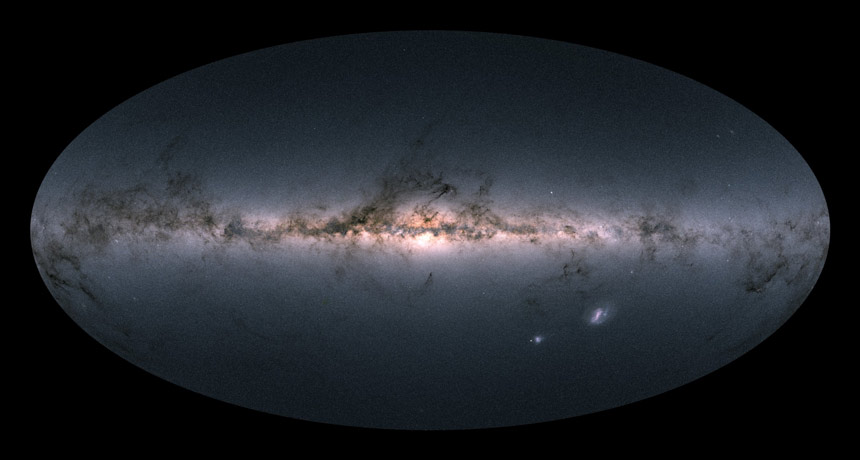The latest star map from the Gaia spacecraft plots 1.7 billion stars

Using the precise position and brightness of almost 1.7 billion stars, the Gaia spacecraft has created the most precise 3-D map of the Milky Way yet.
On April 25, the European Space Agency’s Gaia team released the spacecraft’s second batch of data, gathered from July 2014 to May 2016, used to create the map. The tally includes measurements of half a million quasars — the active black holes at the centers of distant galaxies — and 14,099 known solar system objects (mostly asteroids), observations of other nearby galaxies and the amount of dust in between Earth and 87 million stars (SN: 4/14/18, p. 27).The spacecraft also measures the distances and motions of stars by taking advantage of Earth’s motion around the sun, a technique called parallax. As Earth moves, stars appear to trace a small ellipse, whose size is related to the stars’ distance. Measuring the wavelengths of light the stars emit tells how fast they are moving toward or away from the sun. Combining Gaia’s measurements with earlier sky surveys let astronomers track stars’ motions.
Gaia launched in 2013, and released its first batch of data in September 2016 (SN: 10/15/16, p. 16). Those data included distances and motions of roughly 2 million stars; the new data up that number to 1.3 billion.
Knowing those distances will allow astronomers to decipher details about the Milky Way’s shape and history. Already the second data release suggests that the galaxy contains two distinct populations of stars that may have different origins. The stars’ chemistry and motions suggest that some could have originated in a different galaxy that the Milky Way cannibalized long ago.
“With Gaia, we can reconstruct the whole history of the Milky Way,” ESA science director Günther Hasinger said in a news conference April 25.